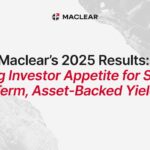Summary: In this guide, we explore various ideas on how to invest $5,000 in Canada. We’ll check out crucial details of each investment option and provide essential tips for new investors, ensuring you set off on the right path toward financial success.
Best Platform for Worldwide Stock Trading & Investing
-
Highly trusted multi-asset broker with clients in over 200 countries
-
Trade on 150 markets globally from a single platform (stocks, ETFs, futures, currencies, crypto & more)
-
Low commissions starting at $0 with no platform fees or account minimums
-
Easily fund your account and trade assets in 26 currencies
-
IBKR pays up to 4.58% interest on cash balances of $10k or more
Understanding your investor profile: The potential of $5,000 in Canada
Every successful investment journey begins with a well-defined plan. And at the core of that plan lies a deep understanding of your investor profile and desired financial outcomes. So, to ensure you meet your financial goals and make necessary adjustments to your investment strategy, it’s key to consider:
- Financial priorities: Embarking on an investment venture can transform your life. Yet, timing is crucial. Before allocating your $5,000, assess your financial priorities. If you have outstanding debts or immediate expenses, it may be wiser to address those first before venturing into investments;
- Investing goals: Next up, you should understand that investment goals differ from person to person. While profitability is a common objective, the paths to achieving it vary greatly. Hence, determine your specific goals. Are you aiming to save for a down payment on a home, a dream vacation, or your child’s education;
- Risk tolerance: Any investing involves risks. And with $5,000, risk management is essential. So, be sure to assess your risk tolerance level and consider how comfortable you are with the possibility of incurring losses. While higher-risk investments may offer the potential for greater returns, they also come with an increased likelihood of volatility;
- Investment devotion: The time you can dedicate to monitoring your investment is another key factor in shaping your strategy. As such, consider whether you prefer a passive or active approach. Passive investing involves investing in low-cost index funds or ETFs and requires minimal ongoing involvement. On the other hand, active investing demands more time and effort, as you actively manage your portfolio and make strategic decisions.
Where to invest $5,000 in Canada
Once you have determined your investor profile, it’s time to delve into the various investment options available. Regardless of your investment goals, we have compiled a list of five different ways to invest $5,000 in Canada, ensuring you find a suitable option, including:
Stock market investments
Investment type: Long-term growth
Risk level: Varies
Recommended broker: Interactive Brokers
Best Platform for Worldwide Stock Trading & Investing
-
Highly trusted multi-asset broker with clients in over 200 countries
-
Trade on 150 markets globally from a single platform (stocks, ETFs, futures, currencies, crypto & more)
-
Low commissions starting at $0 with no platform fees or account minimums
-
Easily fund your account and trade assets in 26 currencies
-
IBKR pays up to 4.58% interest on cash balances of $10k or more
Investing in the stock market is a popular and potentially rewarding option for those looking to grow their money. When you invest in stocks, you become a shareholder in a company, giving you a stake in its success. The stock market offers a wide range of investment options, from large, established companies to small, emerging ones.
While stock market investments carry some risks, they can also yield significant returns over the long term. It’s important to note that stock prices can be volatile, and there is always a possibility of losing money. However, by carefully researching and selecting stocks, you can increase your chances of success.
Before diving into the stock market, it’s crucial to conduct thorough research. So, look for companies with solid financials, a proven track record, and growth potential. Also, consider investing in diverse sectors to spread your risk.
Pros and cons of investing $5,000 in the Canadian stock market

Pros
- Potential for Growth: By investing in stocks, you can benefit from the growth and profitability of Canadian companies, potentially yielding significant returns over time;
- Liquidity: Stocks are considered liquid assets, meaning they can be easily bought and sold in the market;
- Accessibility: Investing in stocks has become more accessible with the rise of online brokerage platforms, which offer commission-free trading.

Cons
- Lack of guaranteed returns: The stock market is subject to various economic, political, and market factors that can cause fluctuations in stock prices;
- Short-term volatility: Stocks less suitable for short-term investors or those seeking immediate gains;
- Time and effort investment: The stock market is vast and complex, necessitating thorough research and analysis.
ETFs
Investment type: Long-term growth
Risk level: Varies
Recommended broker: Interactive Brokers
If you want to invest in a diversified portfolio without having to select individual stocks, ETFs can be an excellent option. These are investment funds that trade on stock exchanges, representing a basket of different assets such as stocks, bonds, or commodities.
One advantage of ETFs is that they offer instant diversification, reducing the risk associated with investing in individual stocks. By investing in an ETF, you are essentially buying a share in a fund that holds a collection of assets. This allows you to spread your investment across different companies and industries, providing risk mitigation.
ETFs also have lower expense ratios compared to mutual funds, making them a cost-effective investment option. And with a $5,000 budget, you can invest in a selection of ETFs that align with your investment strategy, whether it’s focusing on a specific industry, market index, or even geographical region.
Pros and cons of investing $5,000 in ETFs in Canada

Pros
- Diversification and convenience: Easily diversify your portfolio without active management;
- Low fees: Enjoy cost-effective investing with minimal transaction and maintenance fees;
- Easy access: Accessible to new investors through user-friendly online platforms;
- Liquidity: Benefit from high liquidity due to the broad range of underlying assets;
- Transparency: Track and analyze holdings and performance data with ease;
- Good for long-term planning: Suitable for long-term investment strategies with reduced concern for short-term price fluctuations.

Cons
- Limited control over individual holdings: Lack of ability to exclude specific stocks within the index;
- Market dependence: Performance tied to overall market trends and can’t outperform the market;
- Slower gains compared to riskier investments: Potential for slower and smaller profits due to lower risk profile.
Bonds
Investment type: Long-term growth, diversification
Risk level: Varies
Recommended broker: Interactive Brokers
With a $5,000 budget, you can also consider investing in either individual bonds or bond funds. Namely, individual bonds typically have face values and minimum investment requirements, so you may need to research and select bonds that fit within your budget.
Bond funds, on the other hand, pool investments from multiple investors and provide exposure to a diversified portfolio of bonds. Hence, these investments can offer stability, regular interest payments, and potential capital preservation.
However, it is important to assess factors such as interest rate sensitivity, credit risk, and inflation risk when considering these investments. Consulting with financial professionals can provide valuable guidance in selecting the appropriate bonds or bond funds for your investment goals and risk tolerance.
Pros and cons of investing $5,000 in bonds in Canada

Pros
- Stability and income: Bonds offer stability and regular income through fixed interest payments;
- Diversification: Bonds can help diversify risk in an investment portfolio;
- Preservation of capital: Bonds provide a defined maturity date and face value, preserving the initial investment amount;
- Lower volatility: Bonds generally have lower price volatility compared to stocks.

Cons
- Lower potential returns: Offer lower returns compared to riskier investments;
- Interest rate risk: Bonds are sensitive to changes in interest rates;
- Credit risk: There is a risk of an issuer defaulting on interest payments or failing to repay the principal;
- Inflation risk: Inflation can erode the purchasing power of bond returns.
Commodities
Investment type: Long-term growth, diversification
Risk level: Varies
Recommended broker: Interactive Brokers
Commodities represent a diverse range of assets, including agricultural products like cocoa and rice, as well as oil, natural gas, and precious metals like gold and silver. And although they present diversification benefits and potential hedges against inflation, their high volatility and exposure to external factors should be carefully evaluated.
Additionally, the absence of guaranteed cash flow and potential extra costs should be factored into investment decisions. As with any investment, thorough research is advised to make informed choices regarding commodities in your investment portfolio.
Pros and cons of investing $5,000 in commodities in Canada

Pros
- Diversification: Commodities provide an opportunity to diversify your investment portfolio, as their prices often have little correlation with traditional asset classes like stocks and bonds;
- Inflation hedge: Certain commodities, particularly precious metals, have historically served as a hedge against inflation. They have the potential to retain value during periods of economic turbulence, safeguarding against the erosion of purchasing power;
- Exposure to various industries: Investing in commodities allows you to gain exposure to a wide range of industries. They span diverse sectors, enabling investors to have a stake in multiple industries and potentially benefit from their performance.

Cons
- High volatility and external factors: Commodities can exhibit significant price volatility due to various factors such as geopolitical events, climate changes, or supply and demand dynamics. These uncertainties can lead to substantial fluctuations in prices and potential investment losses;
- Lack of guaranteed cash flow: Unlike some other investments, commodities generally do not offer regular income in the form of dividends or interest payments. The primary source of returns is dependent on price changes in the commodities market, which may result in capital gains or losses;
- Additional costs: Investing in certain commodities, particularly physical ones like gold, may involve additional costs. These costs can include expenses related to storage, security, or insurance.
Dividend stocks
Investment type: Long-term growth, diversification
Risk level: Varies
Dividend stocks are shares of companies that regularly distribute a portion of their profits to shareholders in the form of dividends. Nevertheless, investing in dividend stocks can provide a consistent income stream and the potential for capital appreciation.
Dividend-paying companies are often mature and financially stable, making them suitable for investors seeking income generation. Therefore, you should research companies with a history of consistent dividend payments and sustainable payout ratios.
Pros and cons of investing $5,000 in dividend stocks in Canada

Pros
- Reliable income stream: Dividend investing can provide a steady and reliable income stream, as dividend-paying stocks distribute a portion of their earnings to shareholders in the form of dividends;
- Market independence: Dividend stocks are not solely dependent on the performance of the overall stock market. They can offer a level of stability and consistent returns even during market downturns;
- Lower volatility: Dividend stocks tend to be less volatile than regular stocks. So, companies that consistently pay dividends often exhibit more stable price movements, providing a potentially smoother investment experience.

Cons
- Slow profit growth: Dividend investing may not generate rapid profit growth compared to other investment strategies. The thing is, they are typically paid out of a company’s earnings, which could limit the potential for significant capital appreciation;
- Changes in dividend policy: Companies can modify their dividend policies over time. They may choose to reduce, suspend, or eliminate dividends based on various factors such as financial performance, market conditions, or strategic decisions. This can, thus, impact the income stream for dividend investors;
- Higher taxes: Dividend income is subject to higher taxes compared to capital gains. In some jurisdictions, dividend income may be taxed at a higher rate than other forms of investment income, which can reduce overall returns for investors.
How to invest $5,000 in Canada—things to consider
As we’ve mentioned, your budget isn’t necessarily as important as having a well-defined plan for successful investing. To minimize the risk of loss and make informed investment decisions, it’s key to, therefore, avoid some common mistakes.
Here’s what to know:
- Diversify your portfolio: By spreading your investments across a wide range of assets, such as stocks, bonds, and commodities, you can reduce the impact of potential losses and create a hedge against inflation;
- Build an emergency fund: This fund acts as a financial safety net and provides stability in case of unexpected expenses. It also helps to avoid the need to liquidate investments prematurely, allowing them to grow undisturbed;
- Prioritize debt repayment: Unpaid debts can hinder your financial stability and limit your ability to take on additional risk. As such, you should clear any debts to create a solid foundation for investing that allows you to allocate your capital better;
- Conduct thorough research: We can’t stress enough how important it is to do research. But not just the market, but also brokers, assets, and any related news.
The bottom line
Although it might seem like a small sum, investing $5,000 in Canada in 2024 opens up many opportunities to profit. Still, regardless of whether you choose to invest in the stock market, ETFs, bonds, dividend stocks, or commodities, you must conduct thorough research and consider your risk tolerance, financial goals, and investment horizon.
Using online investment platforms like Interactive Brokers can help provide valuable guidance throughout the investment process. But it’s still worth remembering that all investing involves risks, and it’s essential to diversify your investments and review your portfolio periodically to ensure it aligns with your changing financial situation and goals.
Disclaimer: The content on this site should not be considered investment advice. Investing is speculative. When investing, your capital is at risk.
FAQs about how to invest $5,000 in Canada
How to invest $5,000 in Canada?
To invest $5,000 in Canada, you can use reputable online exchange platforms, one of them being Interactive Brokers.
How to invest $5,000 in Canada in stocks?
Optimizing your $5,000 investment in stocks includes diversifying your funds across various company shares through a regulated brokerage like Interactive Brokers.
How to invest $5,000 in Canada in ETFs?
To invest $5,000 in Canada in ETFs, select a reputable online brokerage platform like Interactive Brokers, open an account, and allocate your funds across a diversified portfolio of ETFs that align with your investment goals and risk tolerance.
Is it safe to invest $5,000 in Canada?
Although investing $5,000 in Canada carries inherent risks, with proper research, diversification, and adherence to your risk tolerance, it can be a relatively safe investment.
Best Platform for Worldwide Stock Trading & Investing
-
Highly trusted multi-asset broker with clients in over 200 countries
-
Trade on 150 markets globally from a single platform (stocks, ETFs, futures, currencies, crypto & more)
-
Low commissions starting at $0 with no platform fees or account minimums
-
Easily fund your account and trade assets in 26 currencies
-
IBKR pays up to 4.58% interest on cash balances of $10k or more




